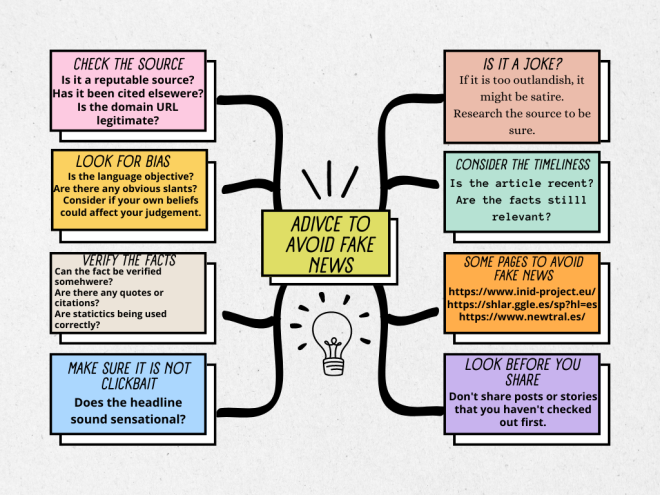CHART
"What is a reliable media ?"
Possible tool :
FRENCH TEAM :
Here are some helpful tips to be a good digital detective :
DO'S :
- First, find out who has written the article.
→ Is this written by a real person with a long history commenting on diverse topics or a fictitious-person created by an internet troll who targets conspiracy theories ?
- Then, ask yourself where the article has been published. Can you find the same information from another source, a more reliable one ?
- Reinforce core facts in the main text, using verified information.
- Warn about related conspiracy theories circulating before referencing them.
- Avoid cynicism but be skeptical.
- Think twice before you like or share an article on social media.
- Be Web Literate. Fact check everything.
- Contact the autor or the web manager with verified information and ask them to make corrections.
- Counter conspiracy theories by using logic and presenting
fact-based explanations.
- Comment with verified information (from fact-checking websites)
→ Use the site SIFT : Stop, Investigate, Find, Trace. You can also use Decodex, TinEye, or Hoaxbuster.com
DON'T :
Don't focus on the conspiracy theory first.
Don't reinforce it.
Don't overwhelm with information.
Do not share the link
Don’t buy into hate. Educate !
SPANISH TEAM :
Ana, Lucía, Laura and Carmen worked on this presentation during the last part of March and the first part of April. In it they try to explain what fake news are and how to avoid them:
This is the chart created by Leyre, Dylan, Blanca and Vikka, from the Spanish Team:




